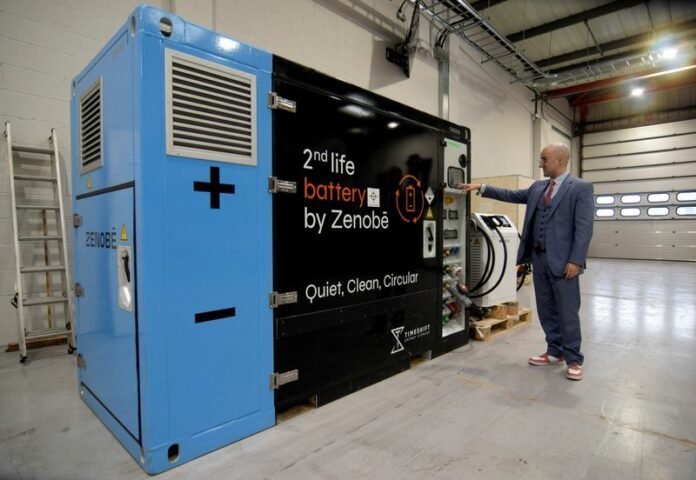Global manufacturers have highlighted plans to re-use electric vehicle batteries when they lose power, but competition for battery packs and cell materials, as well as consumer demand for low-cost vehicles, put doubt on this aspect of the circular economy. A number of startups are providing second-life energy storage utilising old electric vehicle batteries.
However, establishing the sustainable sector envisioned by carmakers such as Nissan would include competing with recyclers, refurbishers, and the requirements of drivers pressed by the cost-of-living problem. While this is a viable solution for buses, lorries, and other commercial vehicles, reusing batteries from passenger cars will take longer.
In theory, the concept of second-life energy storage is straightforward.
The theory is that once the capacity of electric vehicle batteries falls below 80%-85% after eight to ten years of use, they will be repurposed to power buildings or even balance local and national energy networks. Investors who believe in the circular economy, in which products and materials are repaired and re-used, have donated almost $1 billion in funding to nearly 50 firms worldwide.

Furthermore, automakers ranging from Mercedes to Nissan have established their own second-life operations. The issue is a scarcity of old electric vehicle batteries that shows no signs of abating.
As intermittent renewable energy becomes more prevalent, the need for used batteries for storage is expected to skyrocket.
According to the Paris-based International Energy Agency, global battery capacity for grid storage could increase to 680 gigatonne-hours by 2030, up from 16GWh at the end of 2021.
Smartville, a startup based in the United States, has discovered a solution by purchasing battery packs from EVs that have been written off by insurers. Because they cannot gauge the amount and cost of even small damage to electric vehicle batteries, entire cars have been discarded, frequently with nearly 100% battery capacity.
Also Read:


